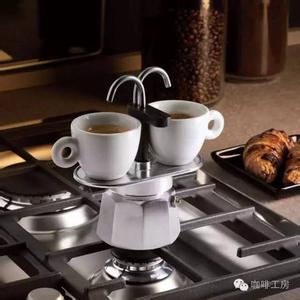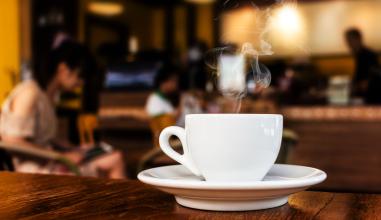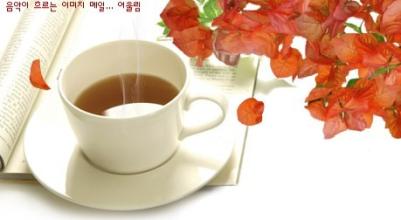30 ways to drink coffee in other countries
PHARIS ER: 1/4 cups of coffee, 1 cube of sugar, 2 small cups of rum, whipped cream
EISKAFFEE: iced coffee, 2 vanilla handmade ice cream balls, whipped cream, chocolate powder
Germany is the second largest importer of coffee in the world after the United States. But initially, coffee shops appeared only in the two northern port cities of Bremen and Hamburg. Berlin did not have its first coffee shop until 1721.
The United States
AMERICANO American Coffee:
Ratio of hot water to espresso 2:1
RED EYE Red Eye Coffee:
Dripping coffee to espresso ratio 1:1
DRIP COFFEE dripping coffee
In the United States, coffee drinkers drink an average of 3.1 cups of coffee a day. 103 million Americans over the age of 18 (about 1/3 of the American population) drink coffee every day.
Italy
ESPRESSO espresso
CAPPUCCINO cappuccino: espresso, steam foam
CAFFE MACCHIATO macchiato: espresso, a spoonful of milk foam
CAFFE LUNGO light coffee: espresso, lots of hot water
CAFFE AFFOGATO Afgado: espresso, a scoop of handmade ice cream
Unlike our coffee shop, in Italy, coffee shops (they are called bar) do not exist to kill time and socialize. Italians buy coffee and drink alone. They like warm coffee served at the right temperature, which allows them to solve it quickly.
Italy has 60 million people, but 100, 000 bar, a higher proportion than any other country. In Italy, the real coffee is espresso. Italians only drink cappuccino in the morning, and they hardly drink coffee with milk after lunch. It is their tradition to have a cup of coffee after lunch and dinner.
Spain
Caf é CON LECHE Milk Coffee: similar to a latte, boiled milk to espresso is 2:1.
Caf é CARAJILLO fennel Coffee: coffee, spirits (brandy, whisky or rum)
Breakfast in Spain is the simplest and least hearty of the three meals, with only a cup of coffee and toast and a little shabby olive oil or tomato.
Portugal
CIMBALINO light coffee
GAL uses the milk foam and espresso of OGV 3RV 1
The Portuguese colonial expansionists actually contributed to the development of coffee to some extent. In the early 19th century, to meet the needs of Western Europe, they made Brazil a coffee growing place, and later found that Brazil's climate is very suitable for coffee growth. Today, most of Portugal's coffee still comes from Brazil.
Austria
KAFFEE BRAUNER:1 espresso, cream, 1 cup of water
EINSP's NNER:2 espresso and whipped cream
After Austria's victory over Turkey at the siege of Vienna in 1683, the first coffee shop appeared in Vienna, using coffee beans left by the Turks during their retreat.
Viet Nam
C "PH" S "A" Á: 1 small espresso, 3 small hot boiled water, 2 tablespoons condensed milk, ice cubes
C "PH" TR "NG:1 cup Vietnam drip coffee, 1 egg yolk, 2 tablespoons condensed milk
As you may not expect, Vietnam is the second largest coffee producer in the world, after Brazil.
Thailand
THAI ICED COFFEE Thai iced coffee: the ratio of coffee, milk and condensed milk is 2:1:1, ice cubes
In the 1970s, the king of Thailand began to implement the policy of growing coffee instead of opium poppy cultivation, which also made coffee popular.
Mexico
Caf é DE OLLA: 3:1 ratio of boiled water to coffee powder, cinnamon sticks, crude brown sugar
Coffee is one of Mexico's main exports, and Mexico is also one of the world's leading producers of organic coffee.
Finland, Denmark
KAHVI (Finland): dripping coffee and a little milk
STEMPELKANDE KAFFE (Denmark): 1 spoonful of coffee and 1 cup of water (usually made by pressing pot)
Finns drink the most coffee in the world, more than any other country. The average Finn consumes 10 kilograms of coffee a year. The roasting degree of local coffee is also considered to be the shallowest in the world. 70% of adults in Denmark drink an average of three to four cups of coffee a day, and for Danes, drinking coffee in the office can boost mental well-being.
Turkey, Greece, Cyprus
TURKISH COFFEE (Turkey): boiled water, coffee powder, cardamom
FRAPPE COFFEE (Greece, Cyprus): coffee, ice water, ice cubes, foam
Turkey once regarded drinking coffee as a basic human right and historically allowed women to approve divorce on the grounds that their husbands had forgotten or refused to provide them with coffee.
Australia, New Zealand
FLAT WHITE: 1 cup of espresso, steamed milk, milk foam
The first espresso machine entered Melbourne in the 1930s, and the local coffee culture was introduced by Italian and Greek immigrants, when Italian and Greek gangsters often met each other in "bar".
Hong Kong
Mandarin duck coffee: 1:1 coffee and black tea, sweetened with condensed milk.
Mandarin duck coffee can be hot or cold. Because it is so famous, Starbucks in Hong Kong and Macau even began to sell mandarin duck coffee in 2010.
France
Milk coffee: espresso, milk foam
It is said that at the Petite Syrah Cafe on the Azure Coast, only the most polite guests can enjoy good and affordable coffee. The bulletin board outside the shop reads:
Un caf é (one cup of coffee)-coffee 7
Un caf é, s'il vous plait (please give me a cup of coffee)-coffee 4.25
Bonjour! Un caf é, s'il vous plait (Hello, please give me a cup of coffee)-coffee 1.40
Ireland
IRISH COFFEE: Irish Whiskey, coffee, brown sugar, whipped cream
It is said that Irish coffee was created in 1942 to cheer up passengers forced to return because of bad weather by adding spirits to the coffee.
Netherlands
KOFFIE VERKEERD: dripping coffee or espresso, twice as much hot milk
VERKEERD means "wrong" in Dutch because most Dutch people themselves think that coffee should be made with less milk. Note that if you see "Coffee Shop", don't go in for a drink, it's not coffee, it's marijuana.
India
Kaapi (Indian Filter Coffee): 1 cup of hot milk, 2 tablespoons of coffee powder, hot water, sugar
Coffee spread to India is said to be attributed to the Baba Budan,17 century, when Baba Budan smuggled seven coffee beans from the port of Muha in Yemen on its way to Mecca.

Important Notice :
前街咖啡 FrontStreet Coffee has moved to new addredd:
FrontStreet Coffee Address: 315,Donghua East Road,GuangZhou
Tel:020 38364473
- Prev

The world's top coffee estate--Inkert estate
Ingerto Manor is located in Guatemala's famous production area of Viviente Nango Plateau. Since 1900, the Aguirre family has been growing coffee. The name Injerto is derived from a local fruit name. Ingerto Manor pays special attention to ecological environment protection and organic cultivation technology. Strict quality control is implemented to ensure the quality of coffee beans. Thanks to Aguirre's efforts, Ingerto Manor
- Next

Why do coffee beans turn brown after roasting? Why is there an aroma?
Coffee beans are light green and turn brown when roasted. This baking characteristic brown mainly comes from the brown pigment produced by oligosaccharins, amino acids and chlorogenic acids. The so-called brown pigment does not refer to a color or ingredient, but a general term for the many ingredients that make coffee different colors. Raw beans gradually change color during baking because of the total amount of brown pigment
Related
- Beginners will see the "Coffee pull flower" guide!
- What is the difference between ice blog purified milk and ordinary milk coffee?
- Why is the Philippines the largest producer of crops in Liberia?
- For coffee extraction, should the fine powder be retained?
- How does extracted espresso fill pressed powder? How much strength does it take to press the powder?
- How to make jasmine cold extract coffee? Is the jasmine + latte good?
- Will this little toy really make the coffee taste better? How does Lily Drip affect coffee extraction?
- Will the action of slapping the filter cup also affect coffee extraction?
- What's the difference between powder-to-water ratio and powder-to-liquid ratio?
- What is the Ethiopian local species? What does it have to do with Heirloom native species?

